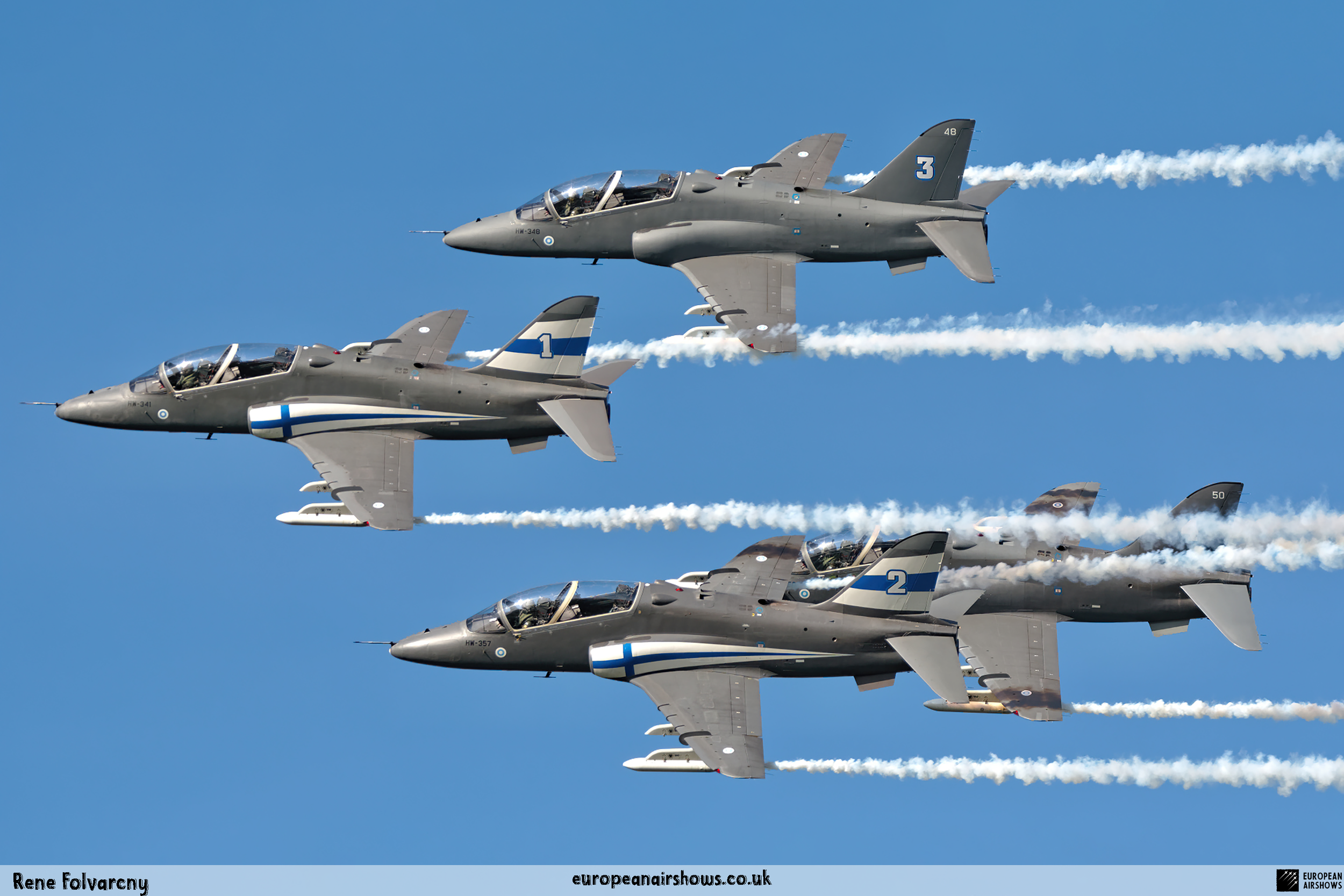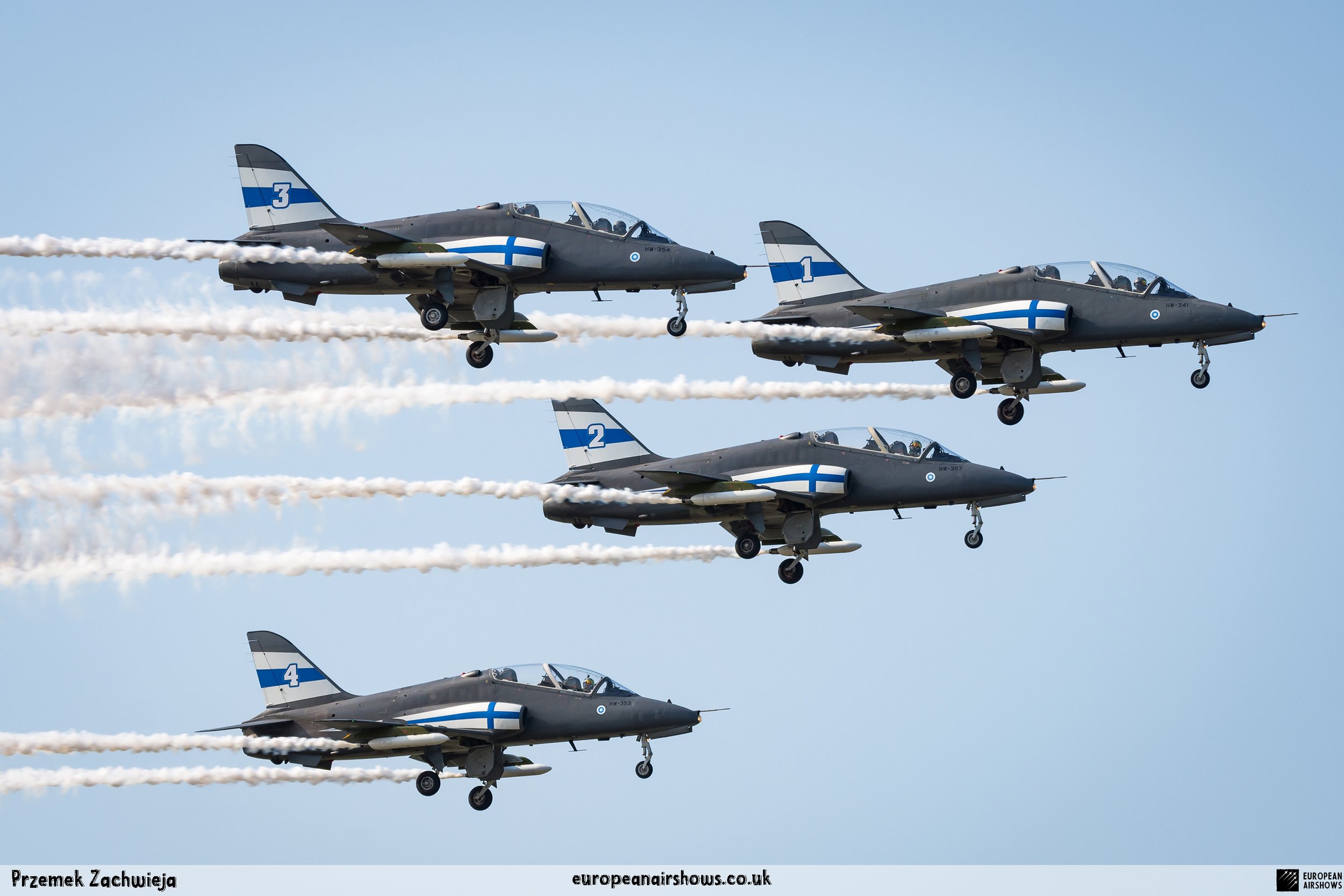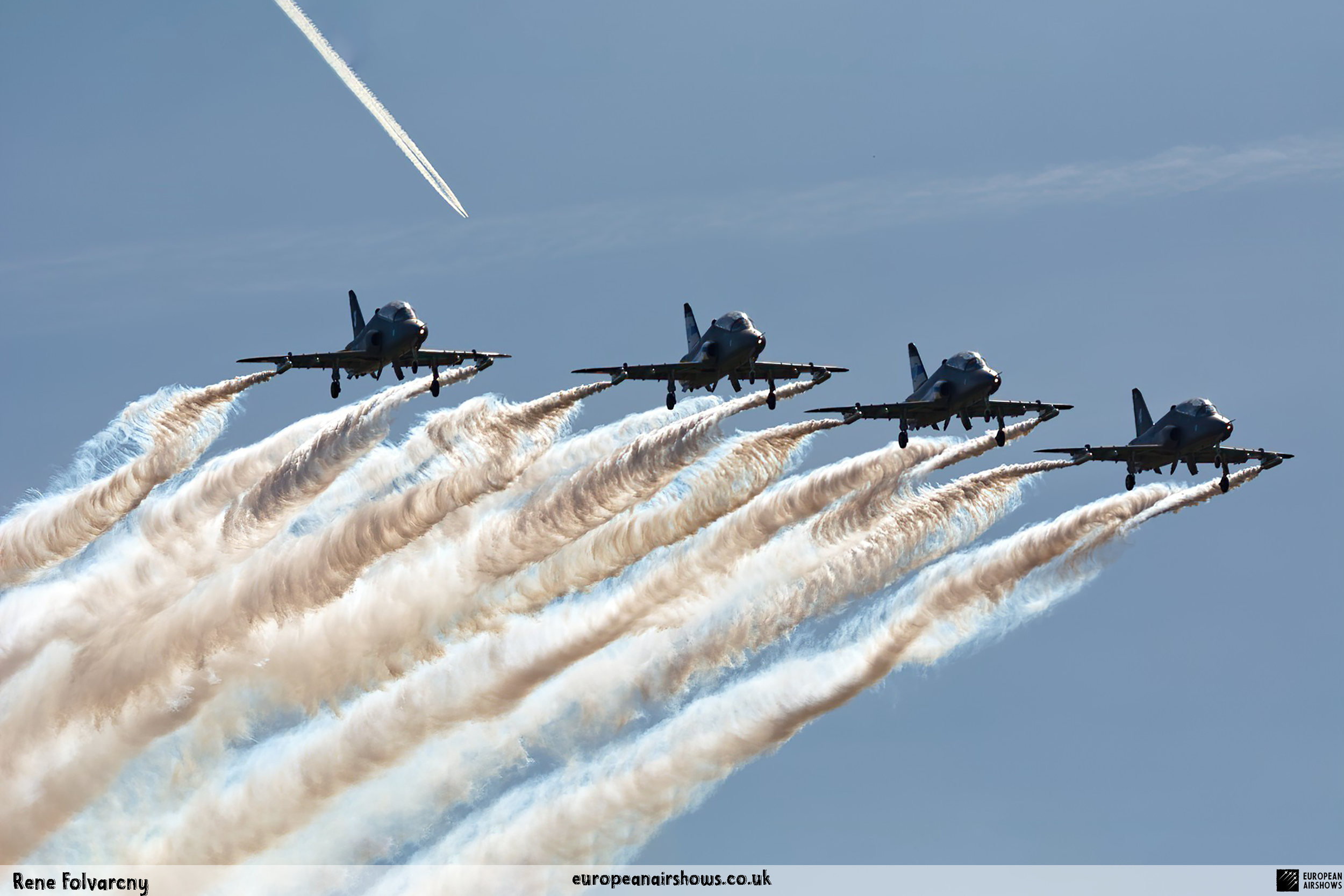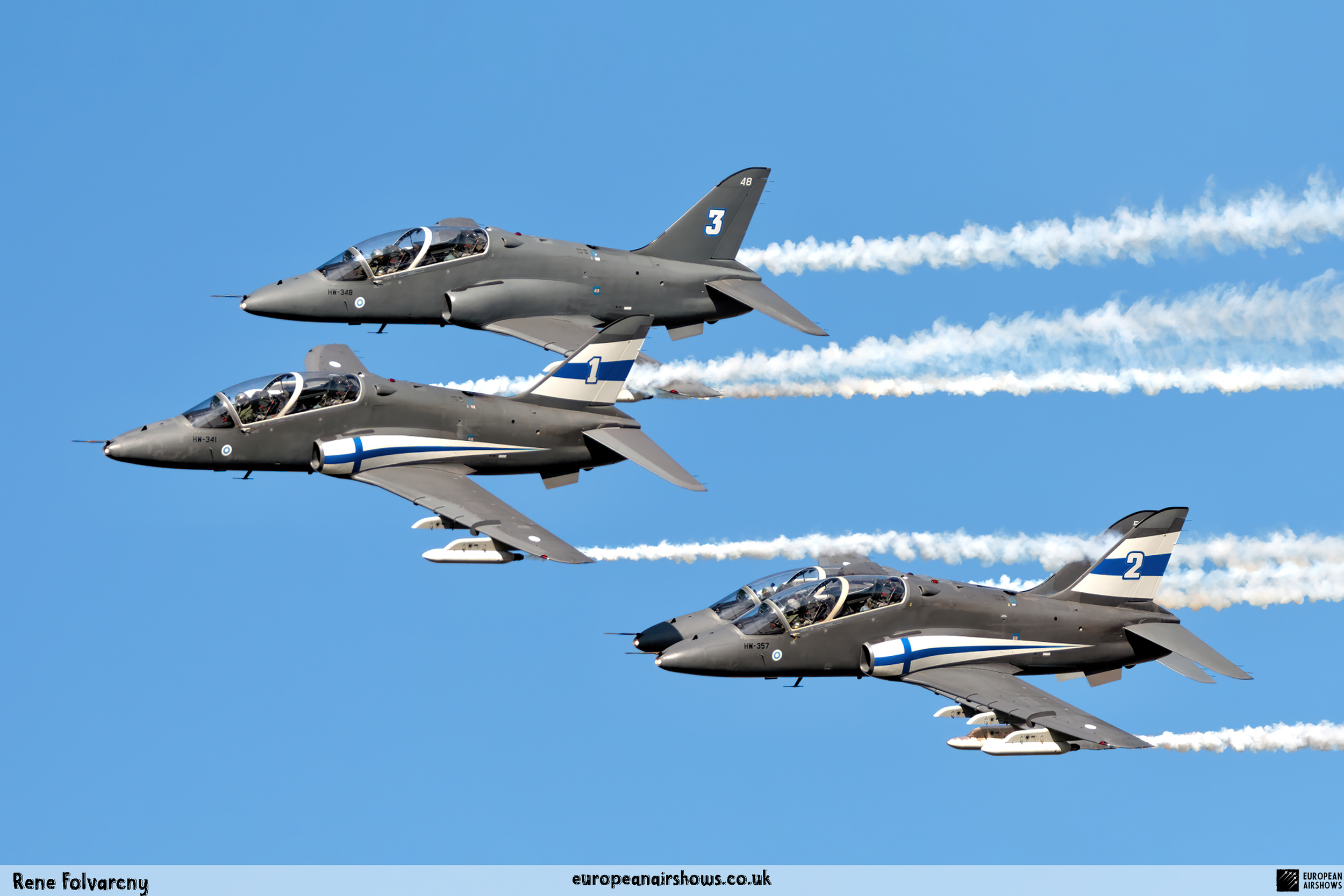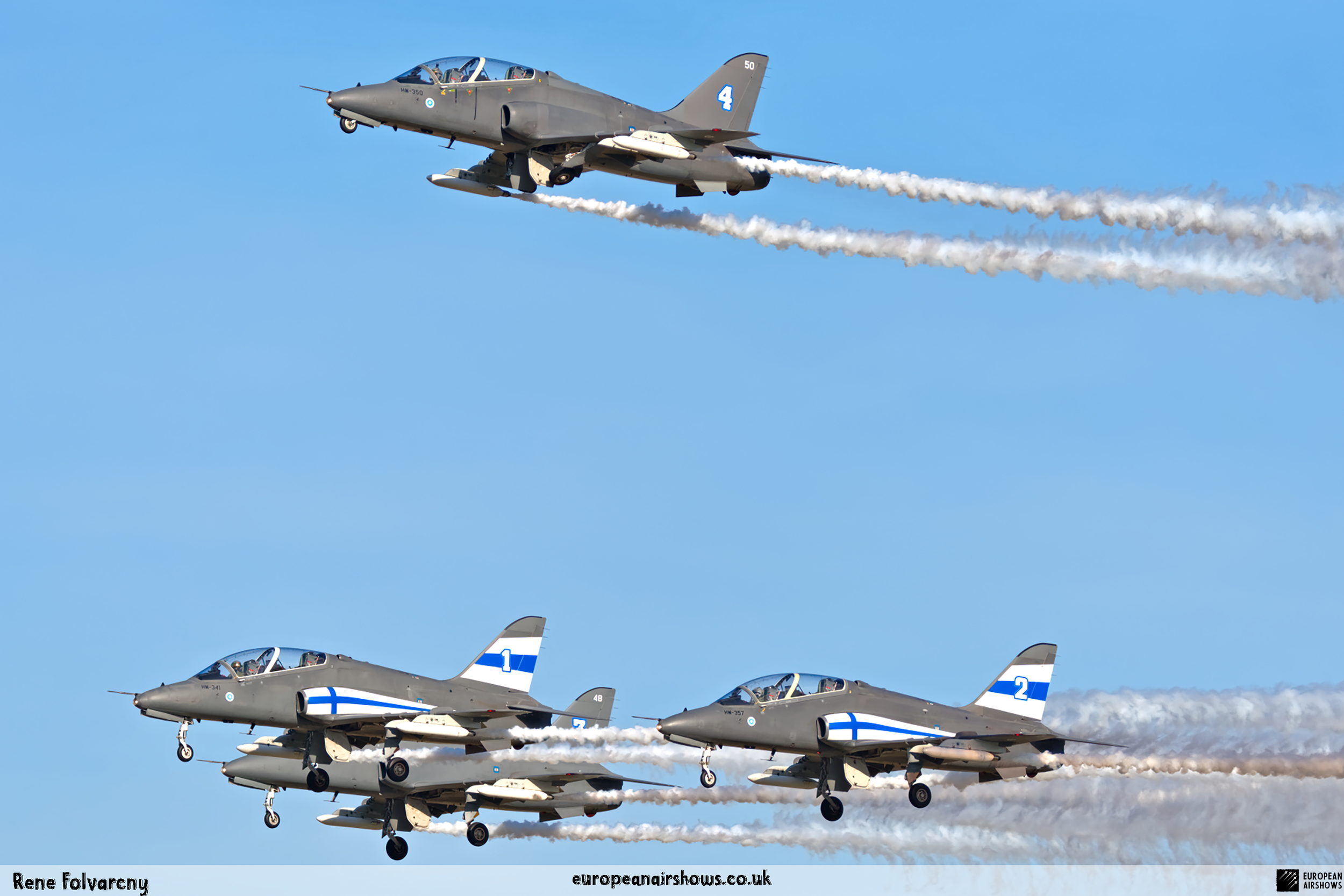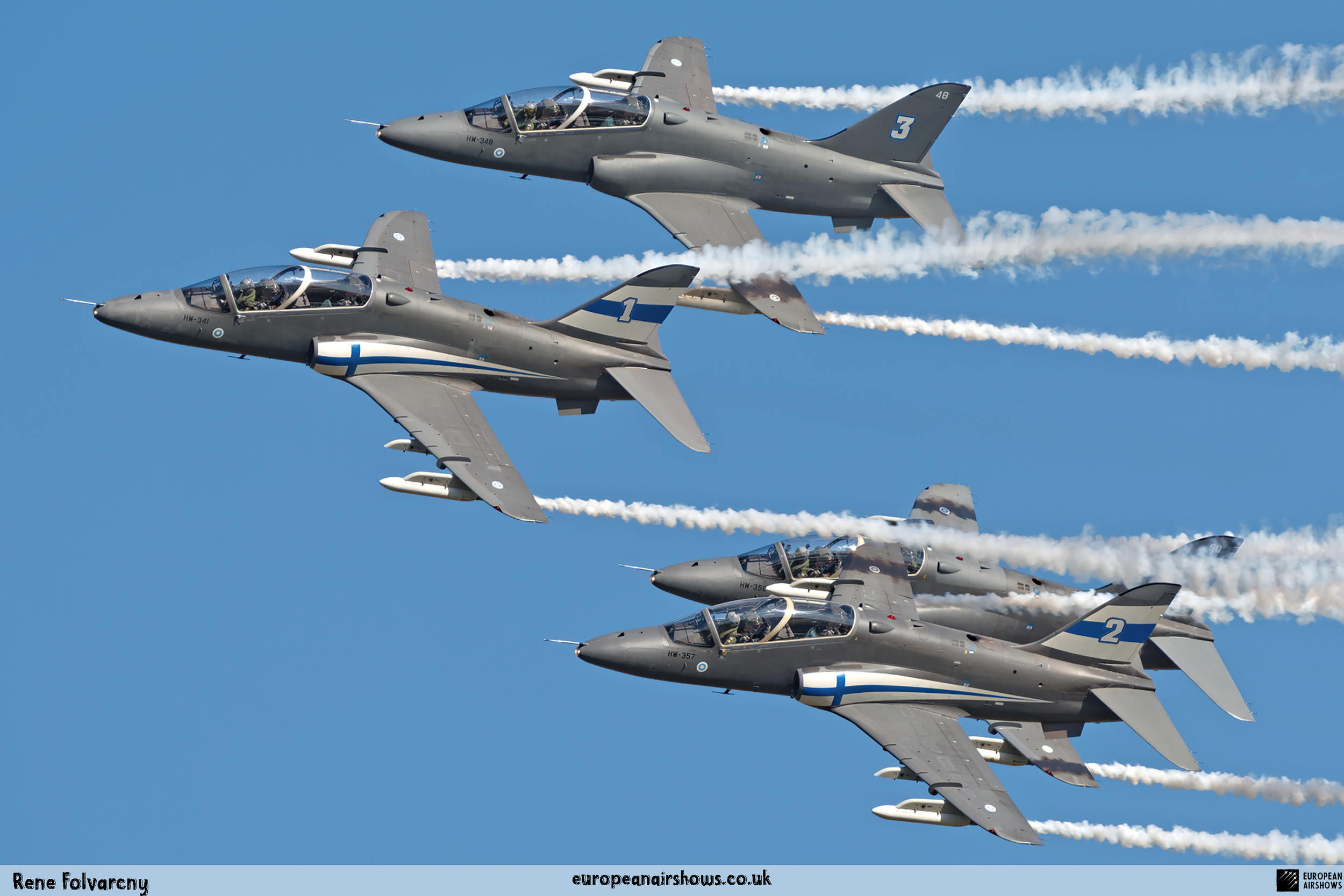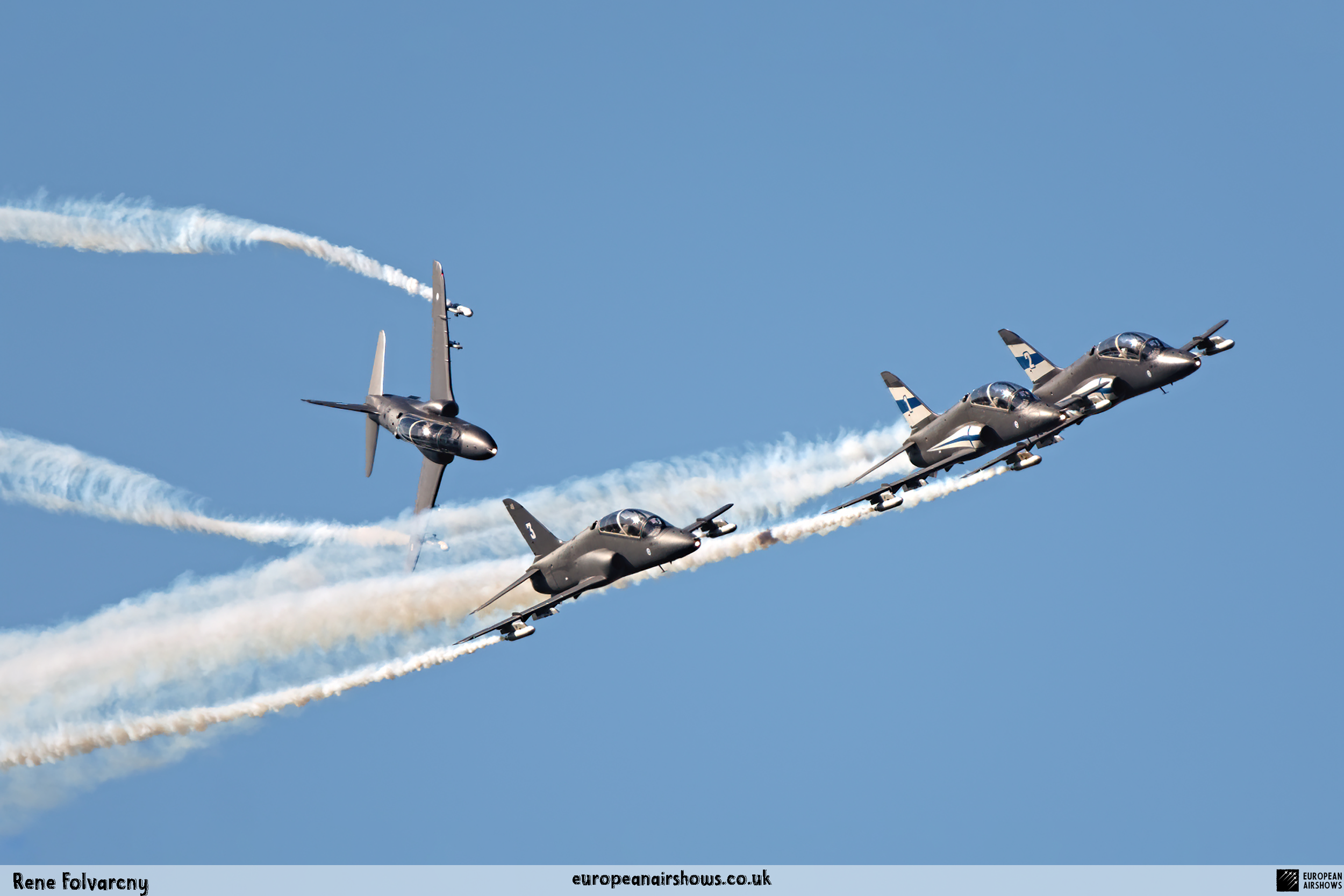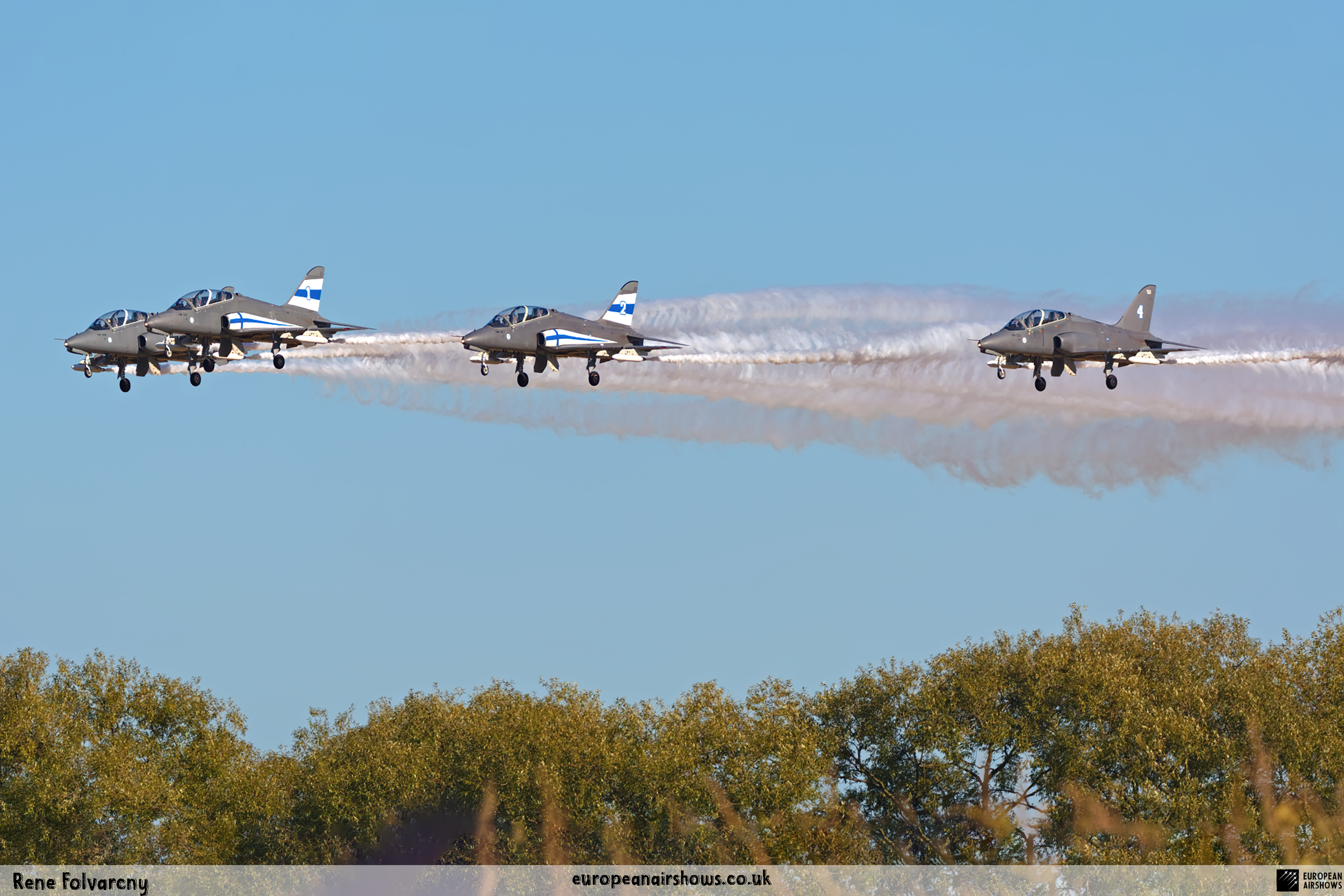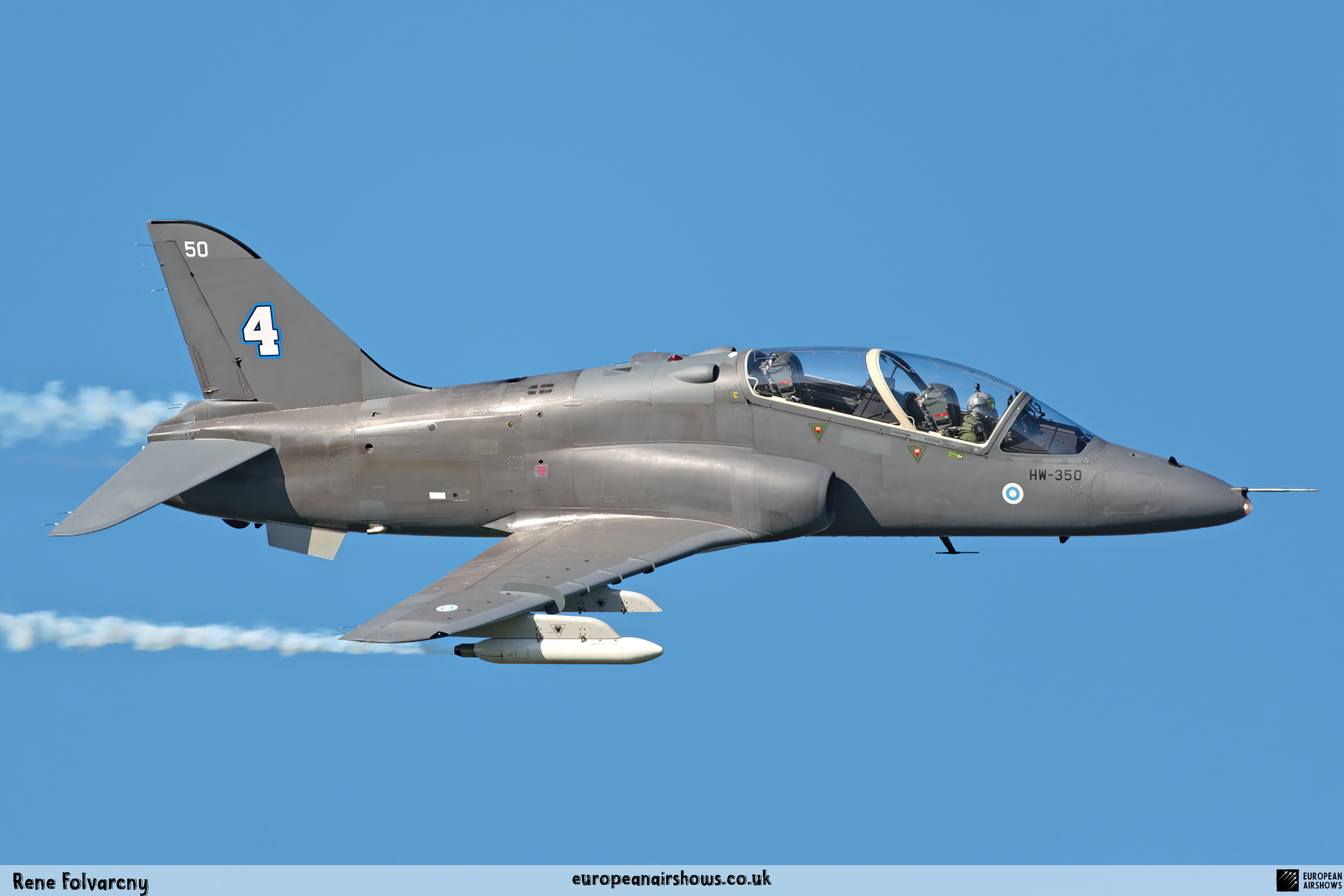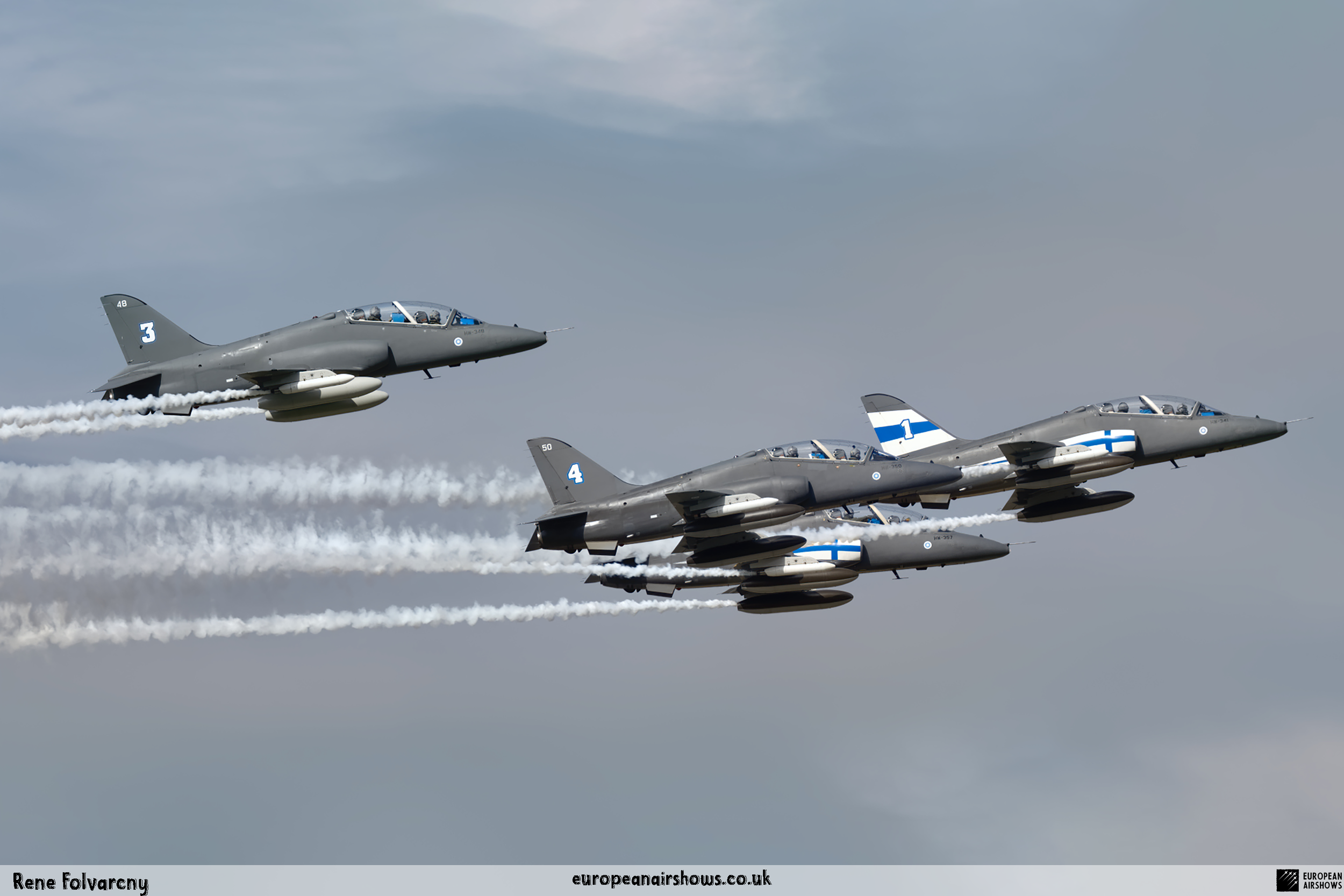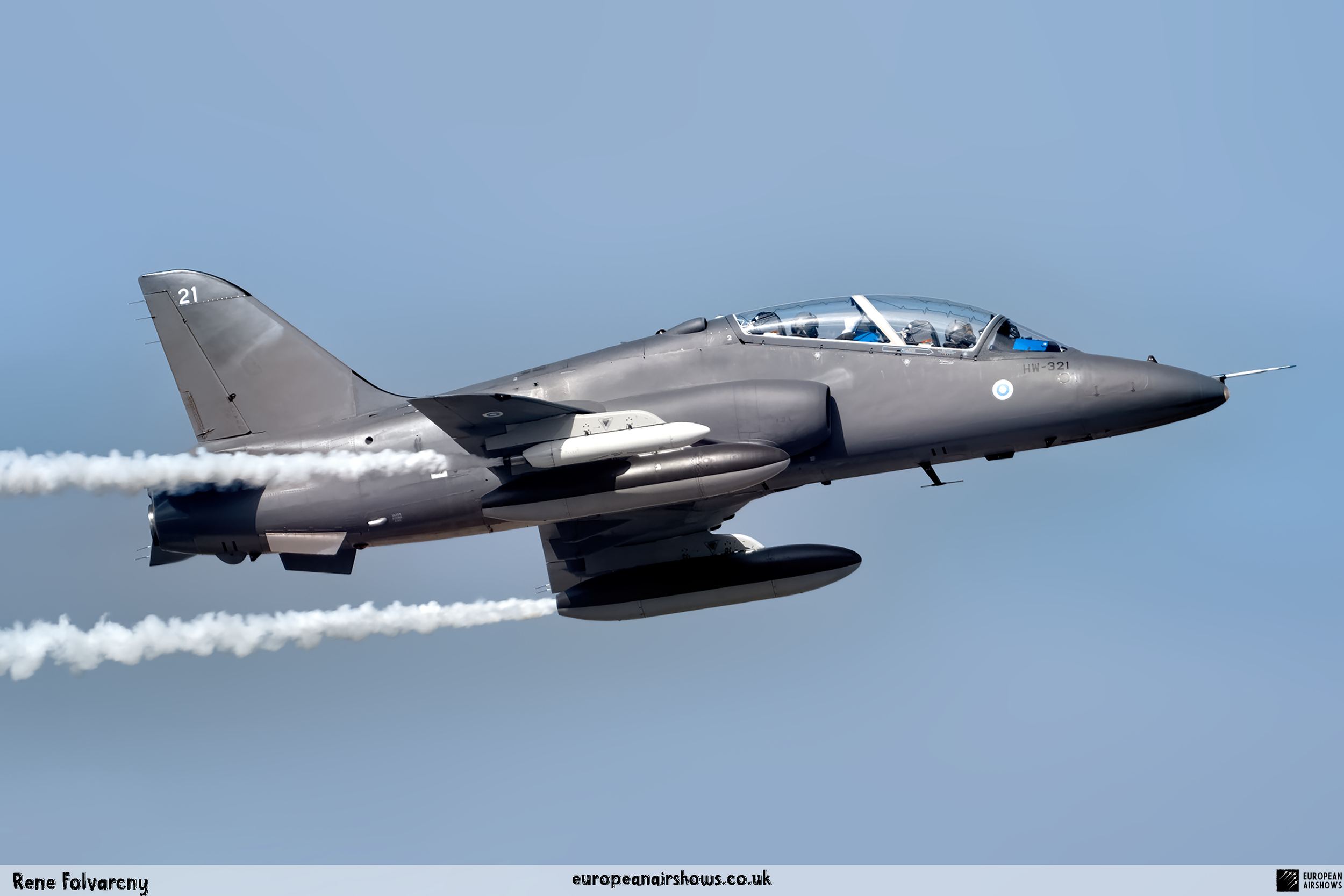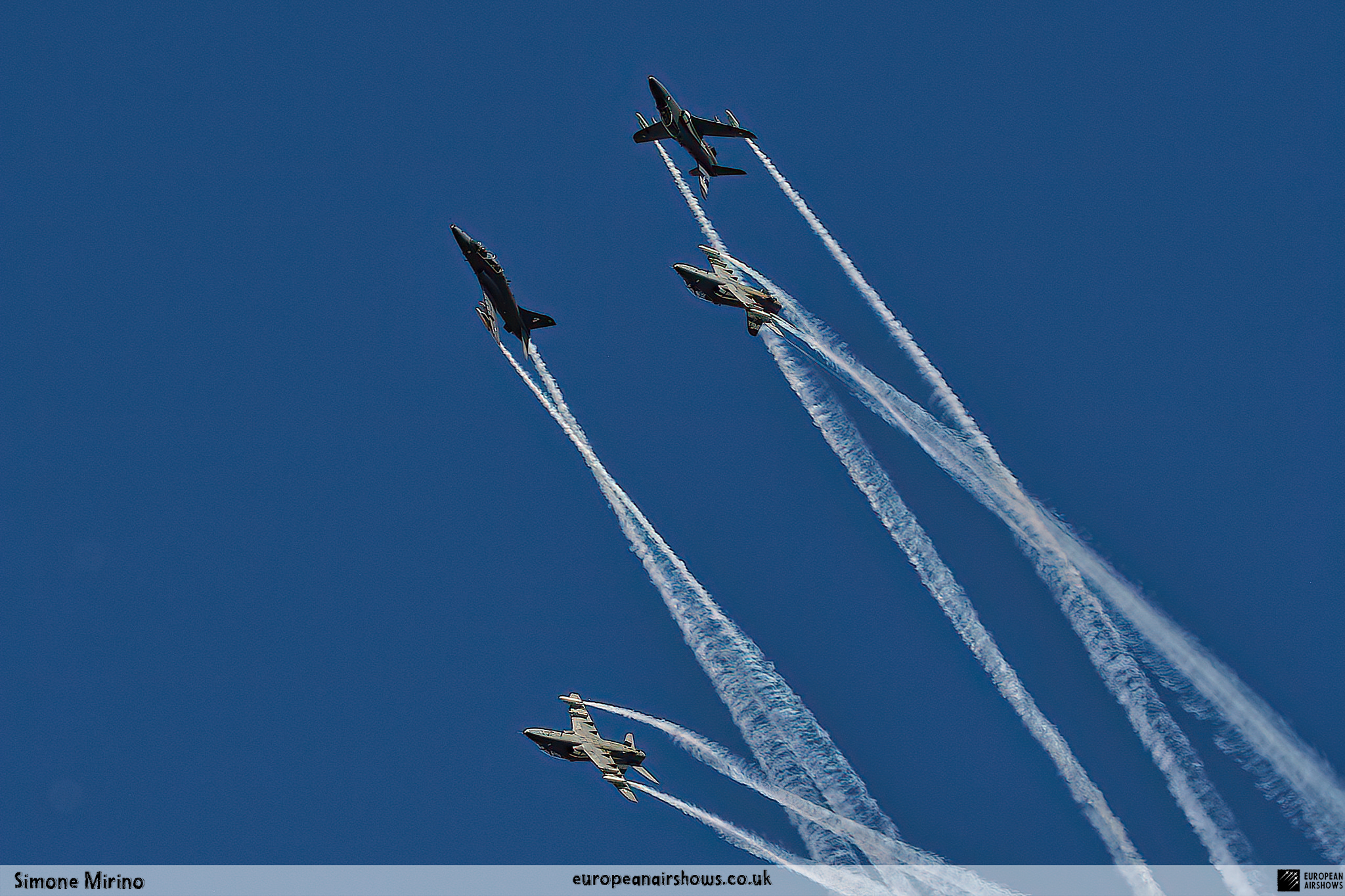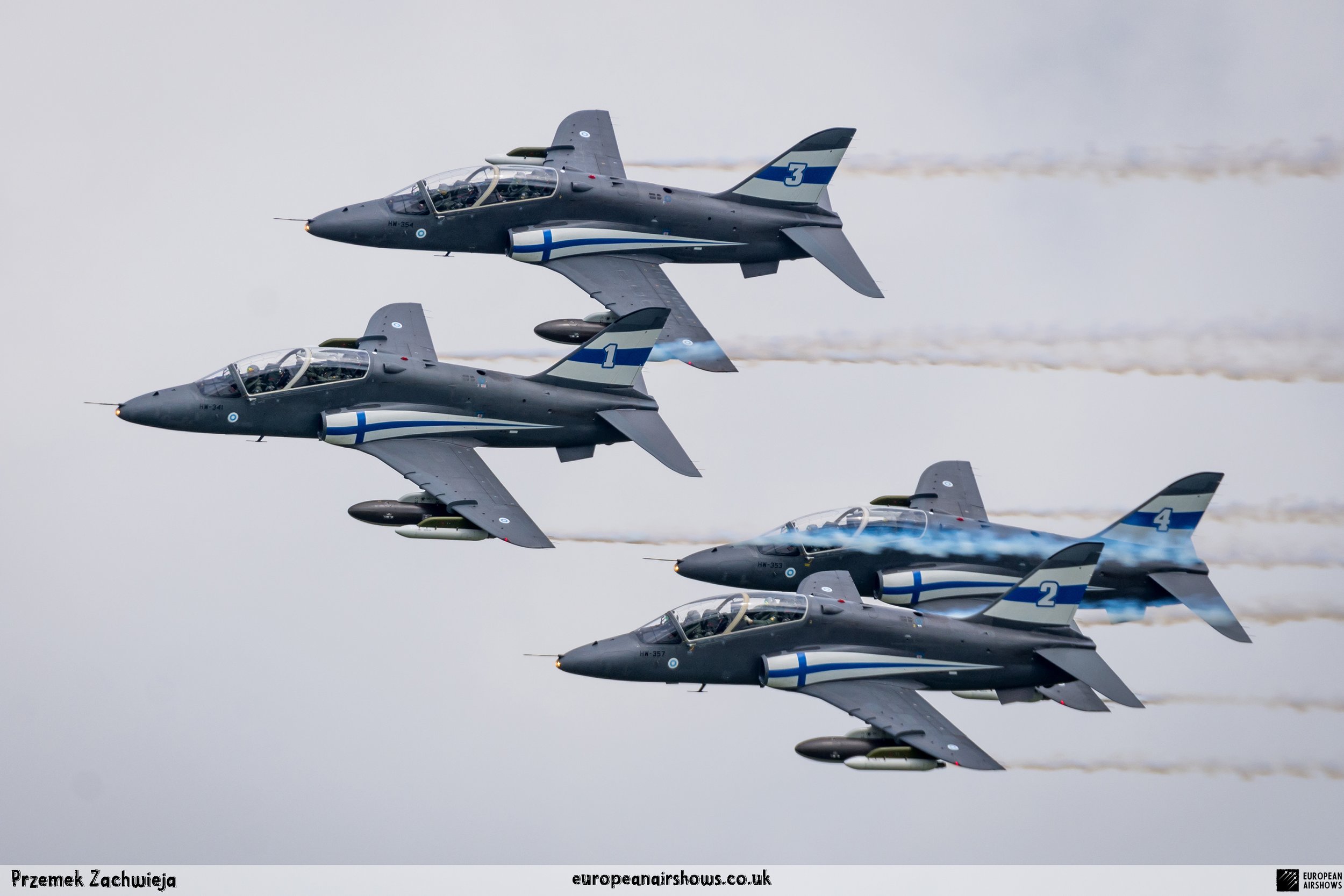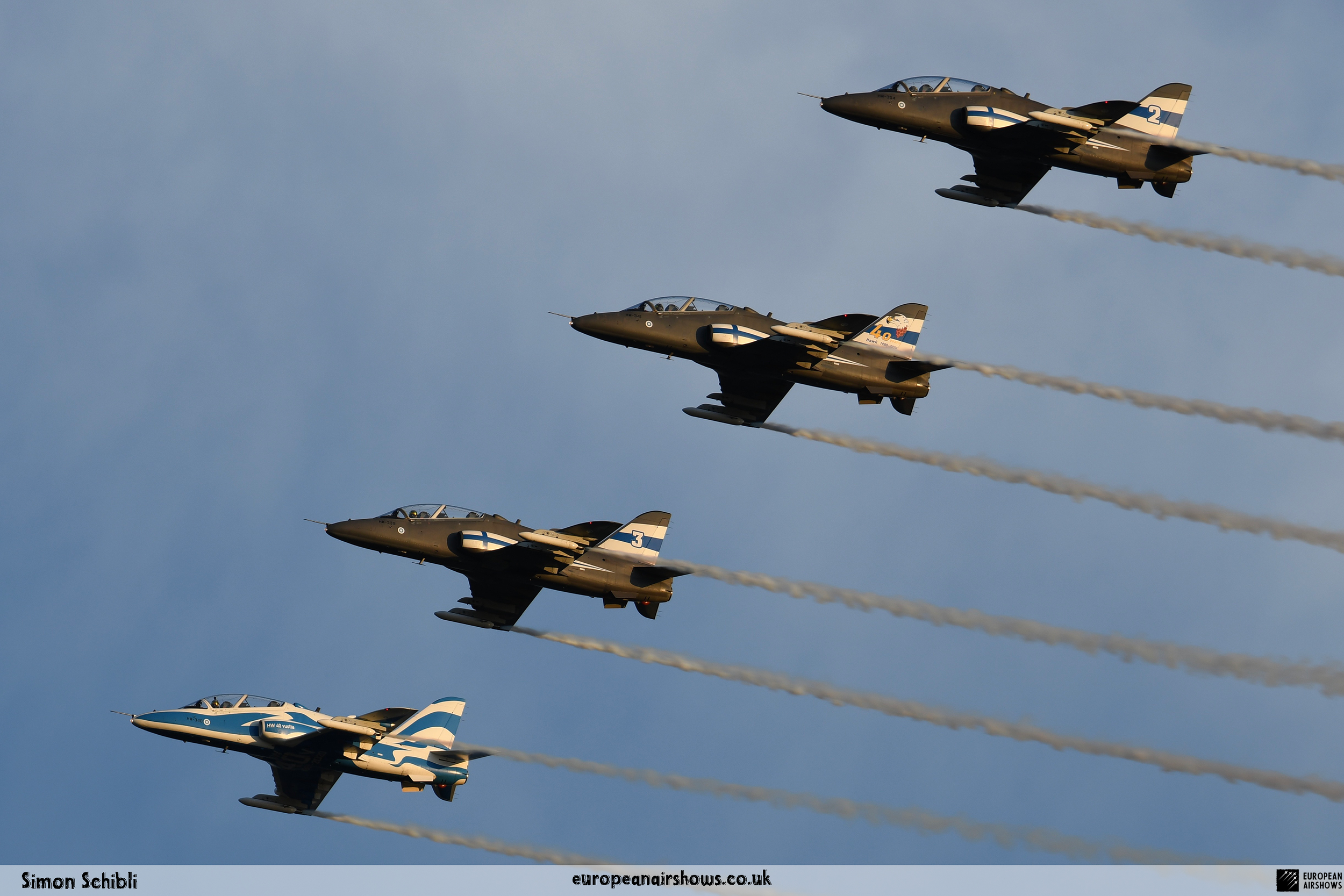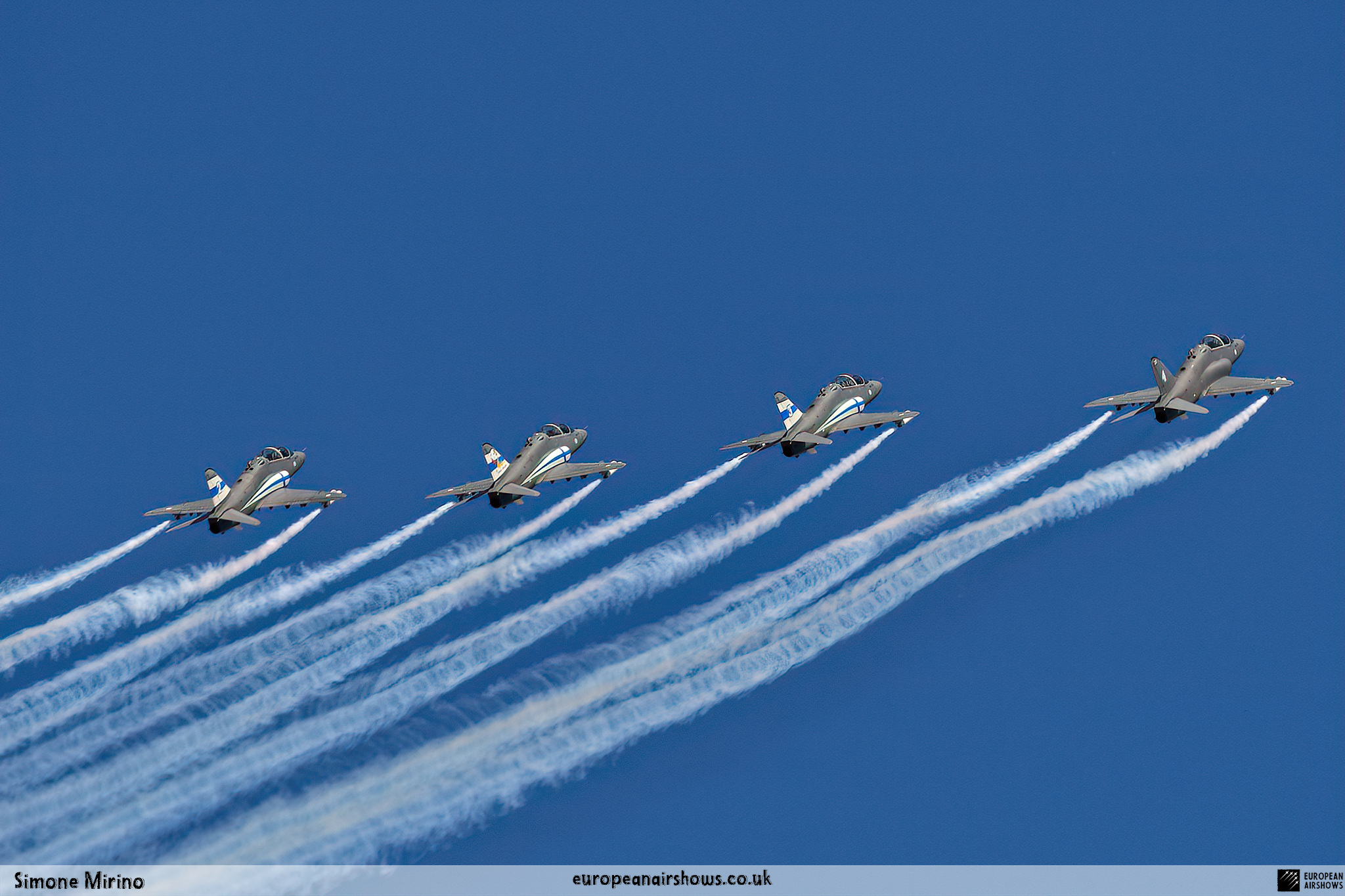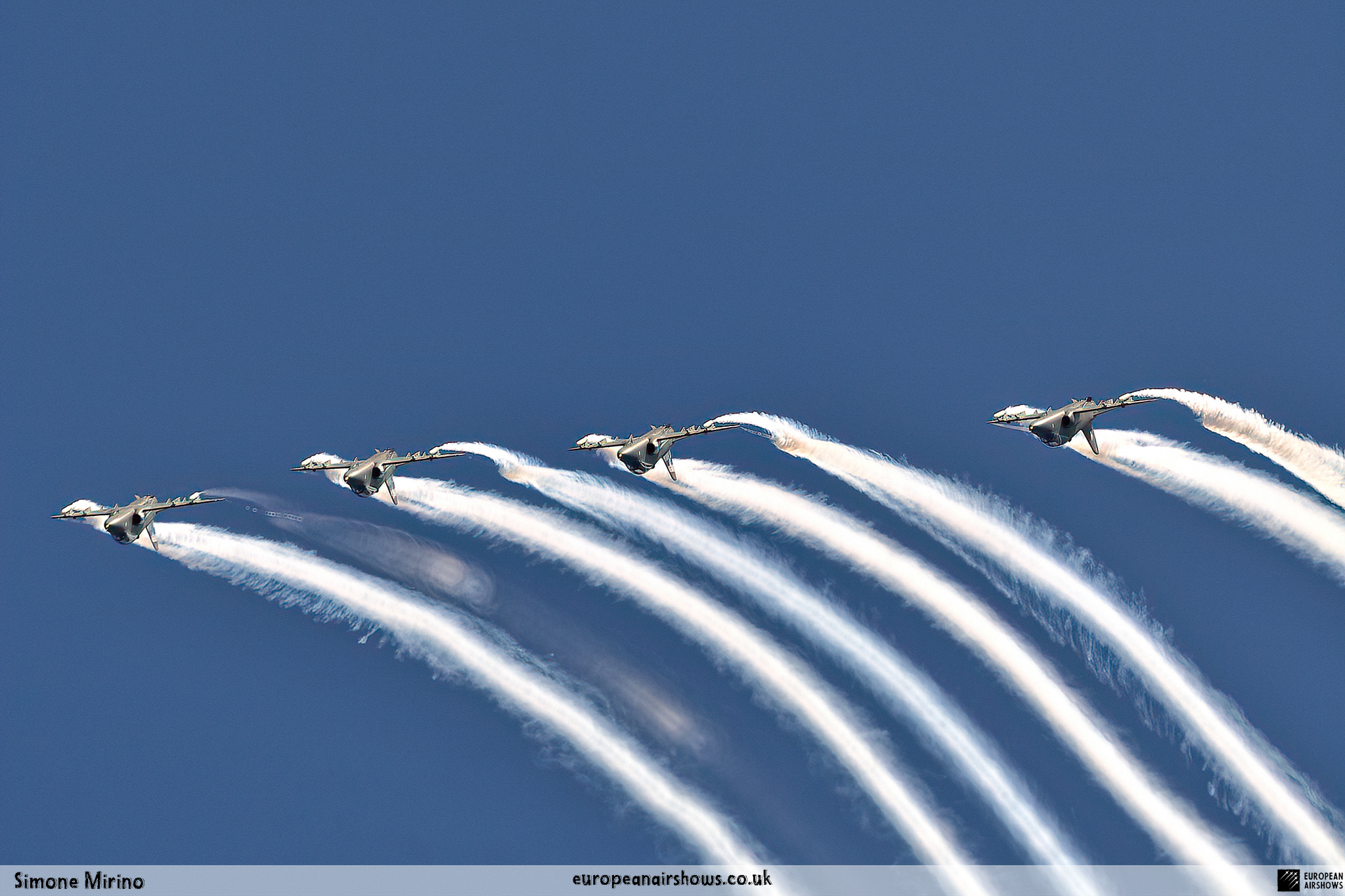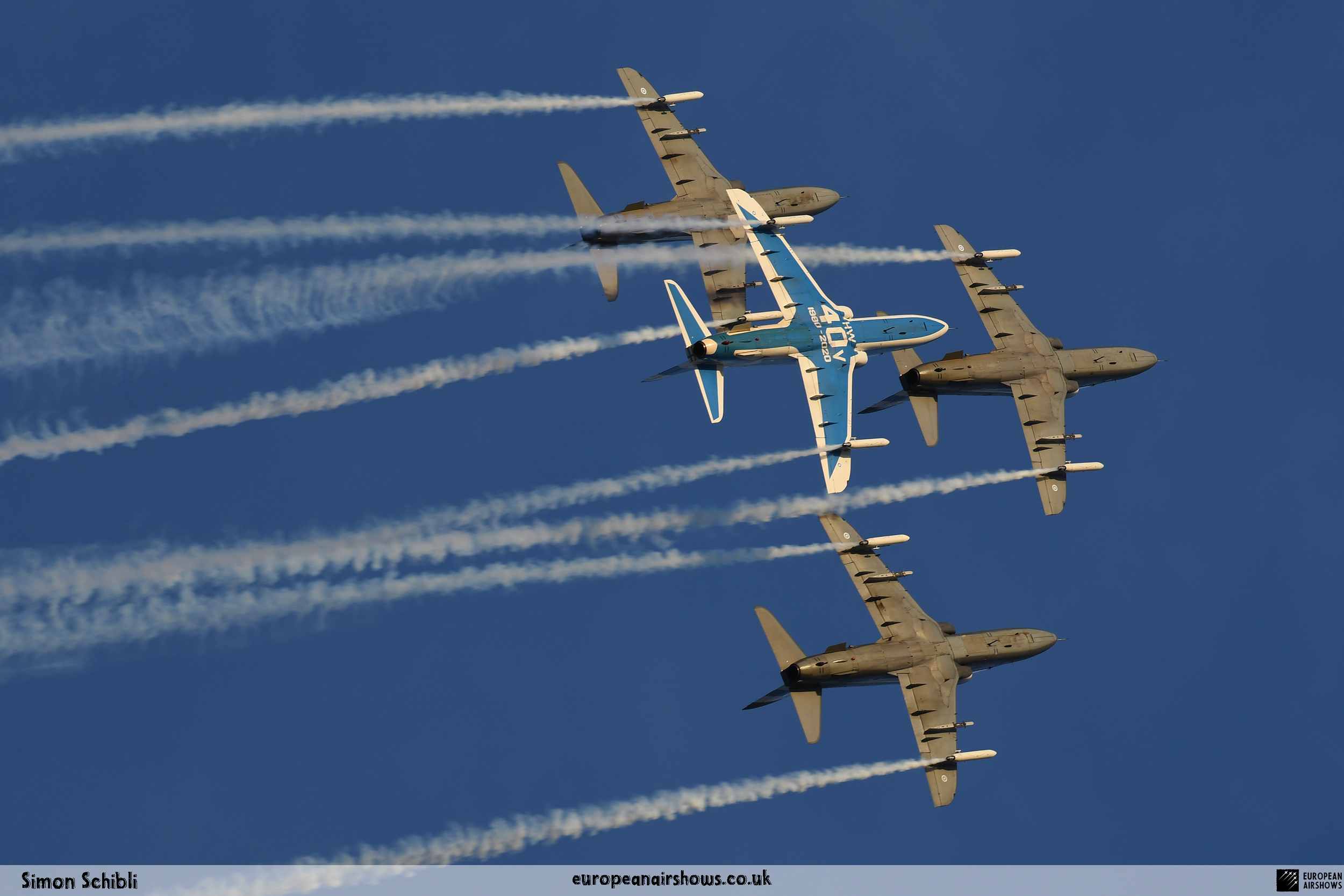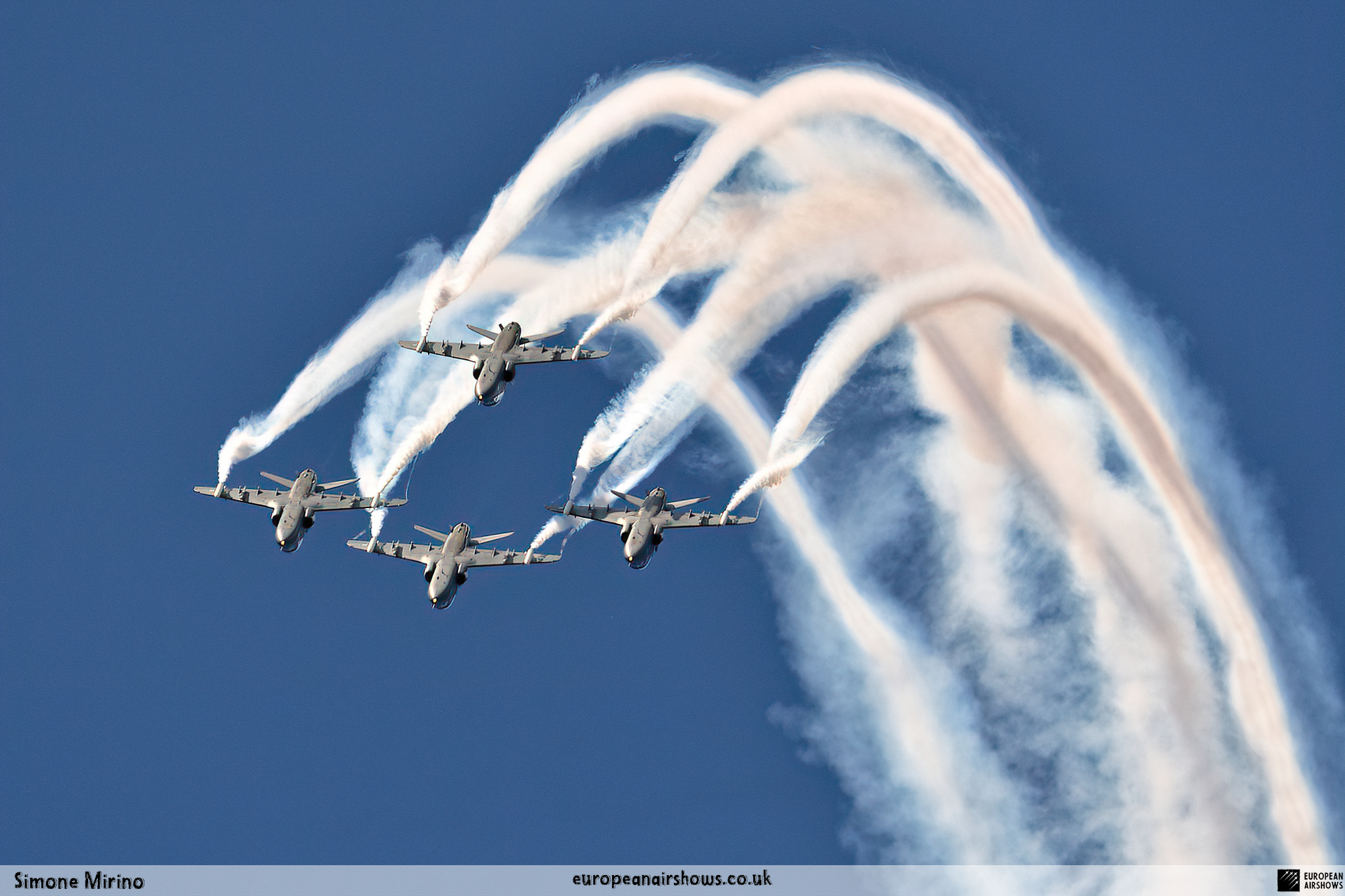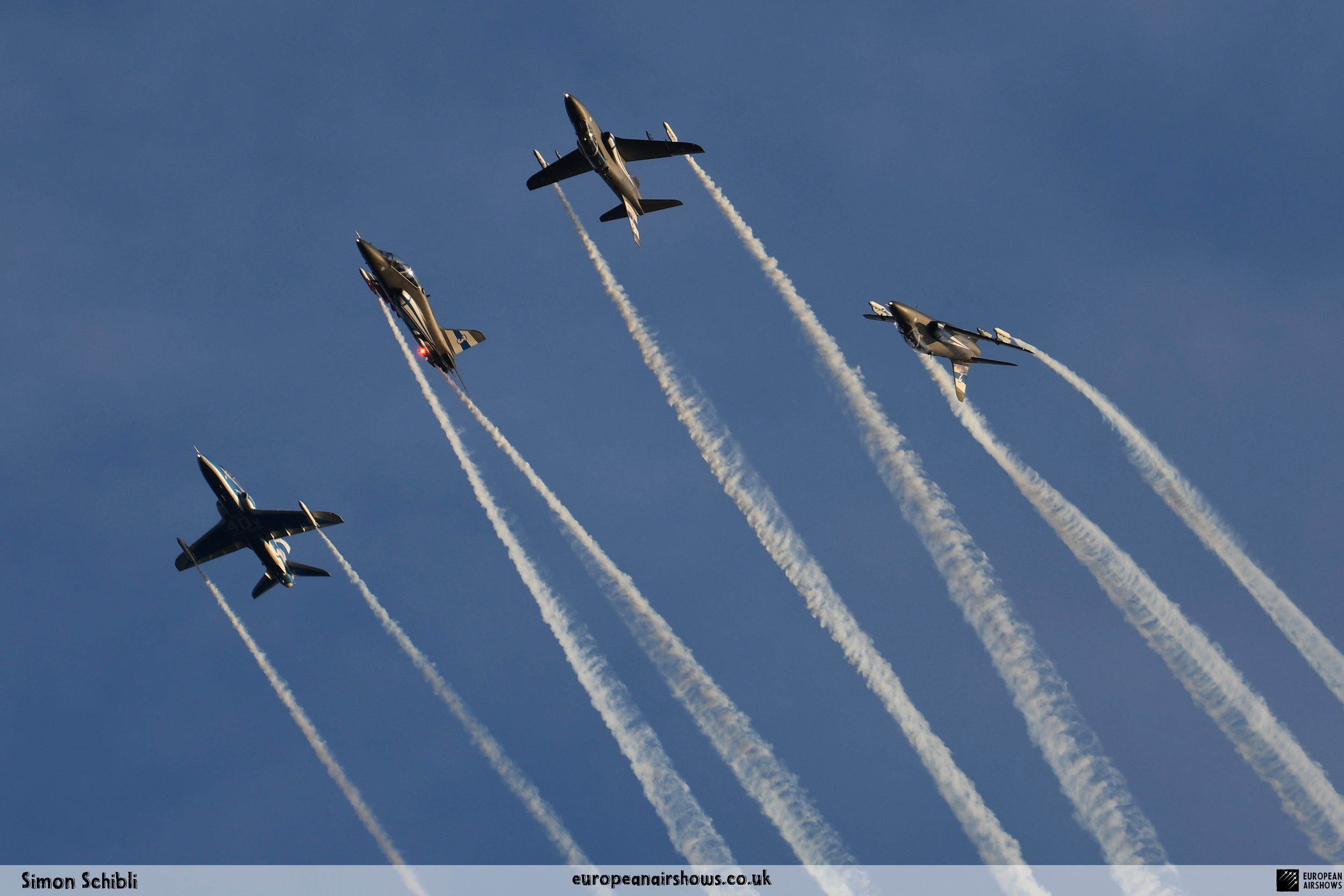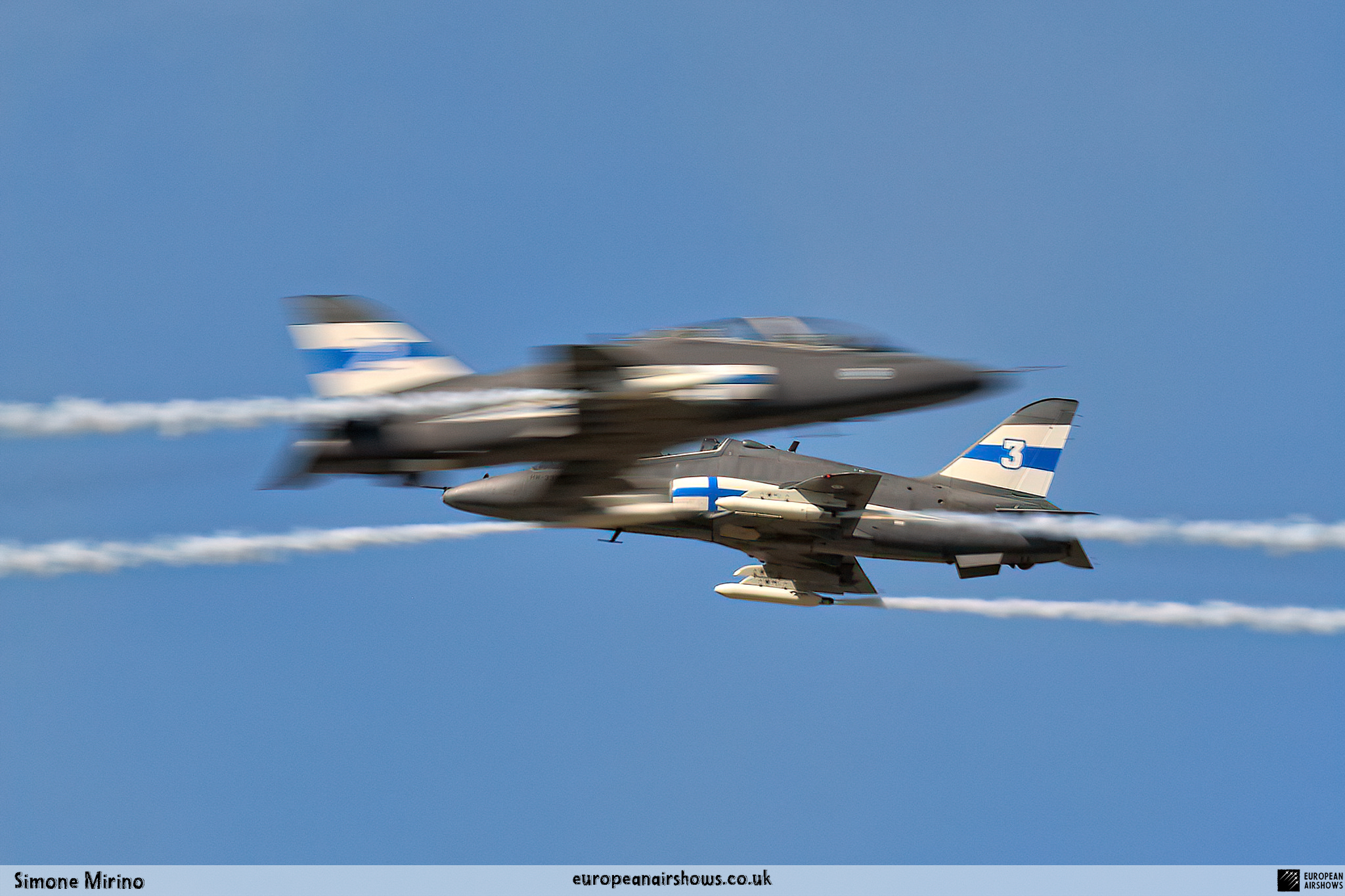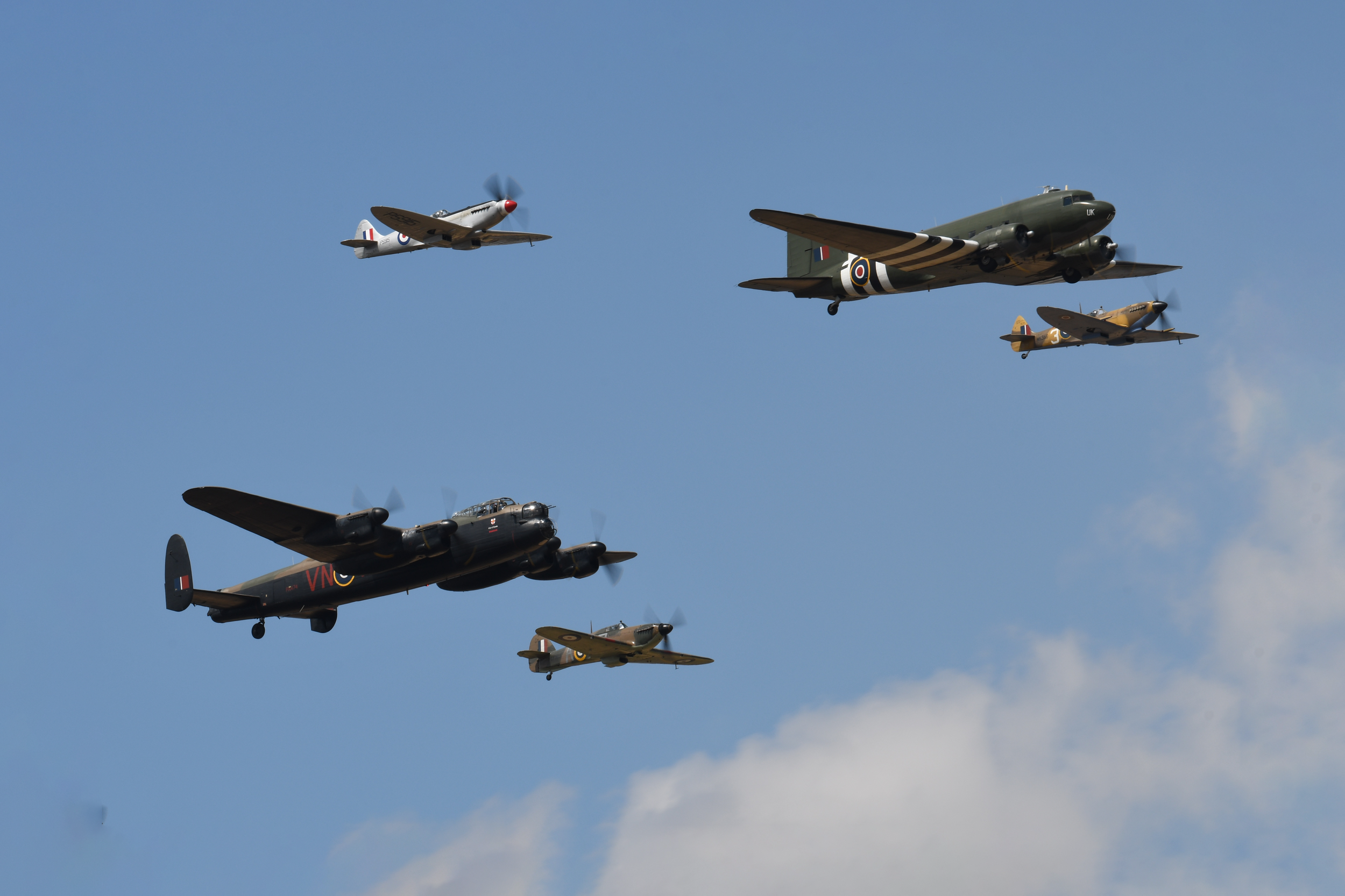Midnight Hawks
Country
Finland
Size
4 to 5 Aircraft
Base
Tikkakoski Air Base
The “Midnight Hawks” is the Finnish Air Force aerobatic team based at Tikkakoski Air Base and perform classic formation flying together with dynamic breaks and impressive opposition passes. During the show, the team displays in front of the crowd at all times and is known for its trademark very tight diamond formation.
The team consists of Six BAe Hawk Mk.51 jet trainers from Air Force Academy: Mostly only four aircraft actually perform during demonstrations as the other two planes are used as a spare. In 2018 the team grew by an additional display pilot and performed their first five-ship display at the Finnish Air Force 100th Anniversary Airshow. Just a few weeks later the team performed their first five-ship display outside of Finland at the 100th anniversary of the Polish Air Force airshow in Radom.
Until 2017 the aircraft were painted in standard air force colours with the only difference being the number 1 to 4 on the tail fin of each jet. In early 2017 the Finnish Air Force announced that the team will finally receive a special paint scheme to commemorate the 100th year of Finland's independence from Russia and just a month later the first hawk in a new blue and white paint scheme rolled out of the paint shop. The team use smoke pods attached to the pylons under each wing instead of releasing the diesel directly into the exhaust.
The Midnight Hawks pilots are all-volunteer flight instructors from the Air Force Academy at Tikkakoski Air Base who practice for their displays in between their main tasks of training the future fighter pilots of the Finnish Air Force.
| Back to Top |
Signature Formations
Line abreast
Shadow
Small diamond
| Back to Top |
BAE Systems Hawk Mk.51
The BAE Systems Hawk is a British single-engine, jet-powered advanced trainer aircraft. It was first flown at Dunsfold, Surrey, in 1974 as the Hawker Siddeley Hawk, and subsequently produced by its successor companies, British Aerospace and BAE Systems. It has been used in a training capacity and as a low-cost combat aircraft.
Operators of the Hawk include the Royal Air Force (notably the Red Arrows display team) and a considerable number of foreign military operators. The Hawk is still in production in the UK and under licence in India by Hindustan Aeronautics Limited, with over 900 Hawks sold to 18 operators around the world.
The Hawk is an advanced trainer with a two-man tandem cockpit, a low-mounted cantilever wing and is powered by a single turbofan engine. Unlike many of the previous trainers in RAF service, the Hawk was specifically designed for training. Hawker had developed the aircraft to have a high level of serviceability, as well as lower purchasing and operating costs than previous trainers like the Jet Provost. The Hawk has been praised by pilots for its agility, in particular, its roll and turn handling.
The design of the fuselage included a height differential between the two seats of the cockpit; this provided generous levels of visibility for the instructor in the rear seat. Each cockpit is fitted with a Martin-Baker Mk 10B zero-zero rocket-assisted ejection seat. Air is fed to the aircraft's rear-mounted Rolls-Royce Turbomeca Adour engine via intakes on each of the forward wing roots. During the aircraft's development, Hawker had worked closely with Rolls-Royce to reduce the engine's fuel consumption and to ensure a high level of reliability.
Even within the development stages, a Hawk variant was intended to also serve as a single-seat ground-attack fighter; both the trainer and fighter models were developed with the export market in mind. On single-seat models, the forward cockpit area which normally houses a pilot is replaced by an electronics bay for avionics and onboard systems, including a fire control computer, multi-mode radar, laser rangefinder and forward-looking infrared. Some export customers, such as Malaysia, have extensive modifications to their aircraft, including the addition of wingtip hardpoint stations and a fittable inflight refuelling probe.
The Hawk was designed to be manoeuvrable and can reach Mach 0.88 in level flight and Mach 1.15 in a dive, thus allowing trainees to experience transonic flight before advancing to a supersonic trainer. The airframe is very durable and strong, stressed for +9 g; the normal limit in RAF service is +7.5/-4 g. A dual hydraulic system supplies power to operate systems such as the aircraft's flaps, airbrakes and landing gear, together with the flight controls. A ram air turbine is fitted in front of the single tail fin to provide backup hydraulic power for the flight controls in the event of an engine failure; additionally, a gas turbine auxiliary power unit is housed directly above the engine.
The Hawk is designed to carry a centreline gun pod, such as the 30 mm ADEN cannon, two under-wing pylons, and up to four hardpoints for fitting armaments and equipment. In RAF service, Hawks have been equipped to operate the Sidewinder air-to-air missiles. In the early 1990s, British Aerospace investigated the possibility of arming the Hawk with the Sea Eagle anti-ship missile for export customers. In 2016, BAE Systems was developing the so-called 'Advanced Hawk' with a new wing using leading-edge slats, and potentially additional sensors and weapons, a head-mounted display, and a single large-screen display in the forward cockpit.
| Back to Top |
